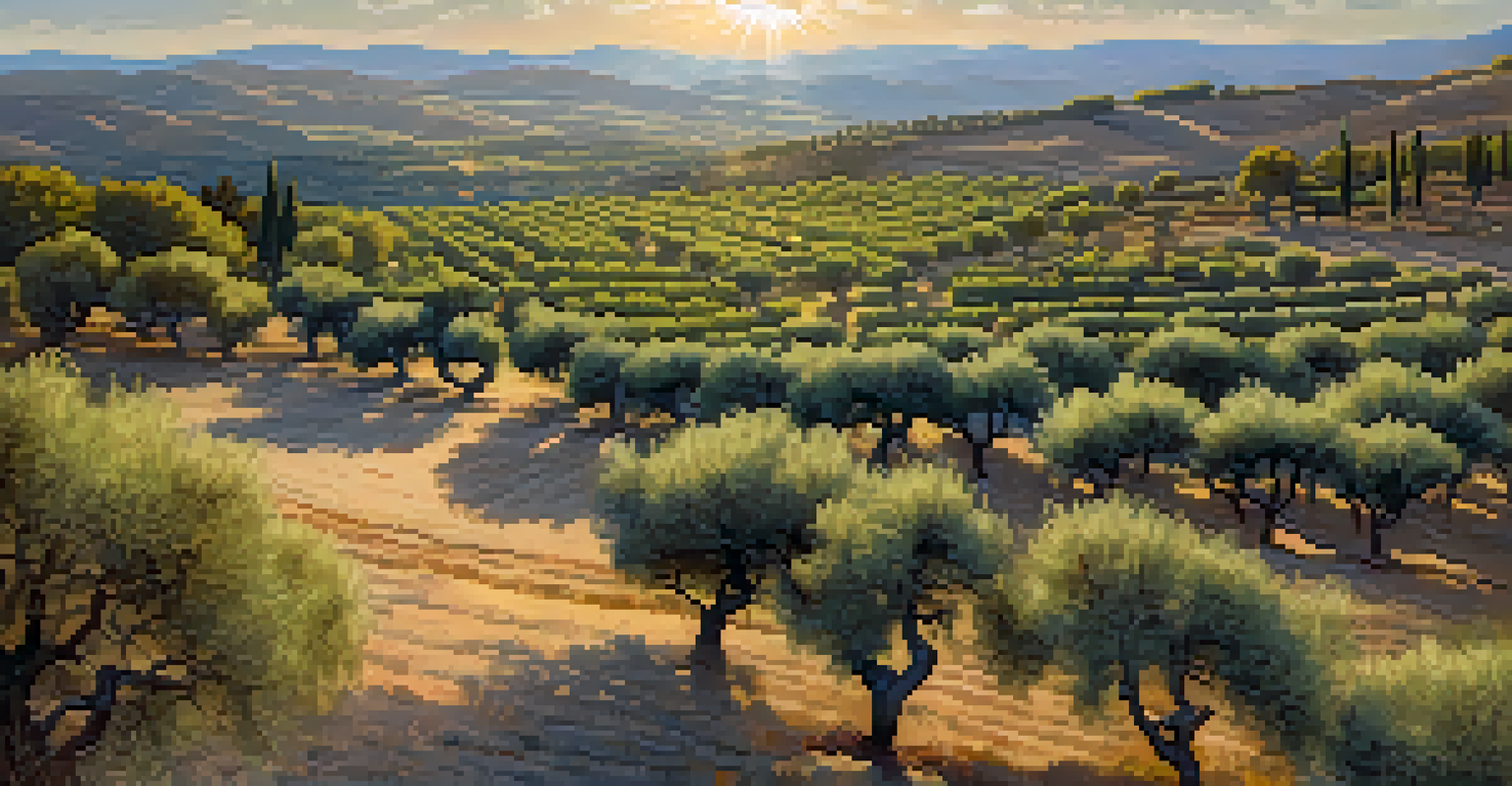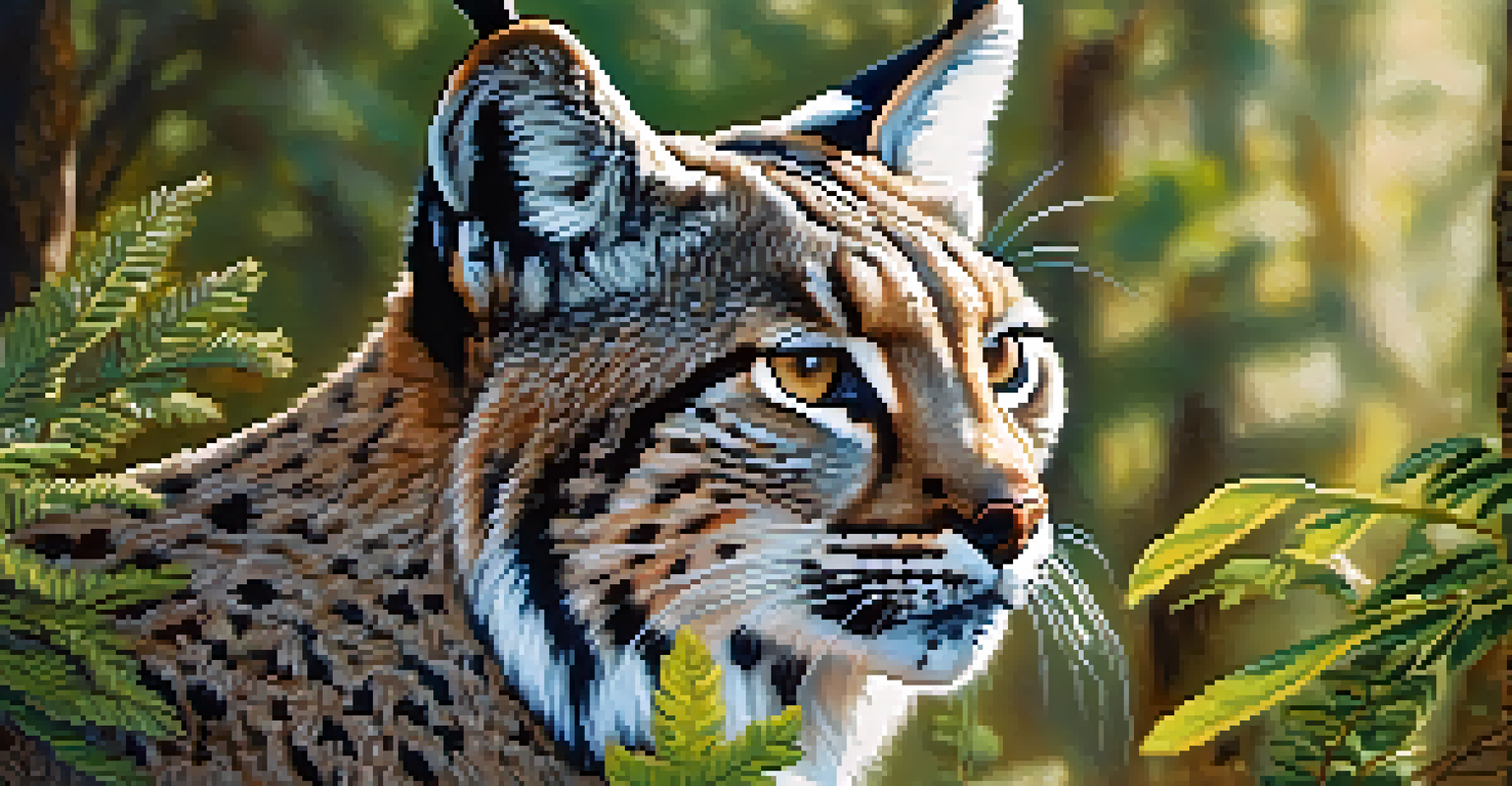Unique Flora and Fauna of Spain: A Wildlife Tour Guide

Discovering Spain's Diverse Ecosystems
Spain is a country of remarkable biodiversity, boasting a variety of ecosystems that range from lush forests to arid deserts. Each region has its own unique blend of flora and fauna, making it a paradise for nature lovers. From the Pyrenees mountains to the Mediterranean coast, every corner of Spain offers something special for wildlife enthusiasts.
In every walk with nature one receives far more than he seeks.
One of the most notable ecosystems is the Mediterranean scrubland, or 'maquis,' which flourishes along the coastline. This area is home to aromatic plants like rosemary and thyme, as well as numerous bird species, including the vibrant European bee-eater. Exploring these diverse habitats allows visitors to appreciate the rich tapestry of life that Spain has to offer.
Additionally, Spain's national parks, such as Doñana and Picos de Europa, provide protected spaces for many endangered species. These parks are crucial for conservation efforts and offer a chance for tourists to witness wildlife in its natural habitat. Each ecosystem tells a story, and Spain is a living book waiting to be explored.
Iconic Flora: The Olive Tree and More
One of the most iconic plants in Spain is the olive tree, which has been cultivated for thousands of years. Spanning vast landscapes, these ancient trees symbolize the country's rich agricultural heritage. The picturesque groves not only contribute to Spain’s economy through olive oil production but also serve as habitats for various bird species.

Another fascinating plant is the cork oak, found predominantly in the southwestern region of Andalucía. These trees are valued for their bark, harvested every nine years without harming the tree, making them a sustainable resource. The cork oak forests also support a unique ecosystem, home to species like the Iberian lynx, one of the world's most endangered cats.
Spain's Rich Biodiversity
Spain boasts diverse ecosystems, from lush forests to arid deserts, each supporting unique flora and fauna.
Additionally, Spain is home to a stunning array of wildflowers, including the rare purple orchid. These vibrant blooms can be seen in fields and meadows, particularly during the spring. The floral diversity not only enhances the landscape but also plays a vital role in supporting pollinators and other wildlife.
Endangered Species and Conservation Efforts
Spain is home to several endangered species, making conservation efforts essential. The Iberian lynx, once on the brink of extinction, has seen a resurgence due to dedicated programs aimed at habitat restoration and breeding. This success story highlights the importance of protecting natural environments and the wildlife they support.
The earth has music for those who listen.
Another species of concern is the Spanish imperial eagle, a magnificent bird of prey that relies on healthy ecosystems for survival. Conservationists are working diligently to safeguard its habitat and increase its population. These efforts remind us of the delicate balance within ecosystems and the need for ongoing protection.
Visitors to Spain can play a role in conservation by supporting eco-friendly tours and choosing to visit national parks. These actions not only benefit wildlife but also help raise awareness about the importance of protecting natural habitats for future generations.
Birdwatching: A Thrilling Experience
Spain is a birdwatcher's paradise, with over 600 species recorded across the country. Whether you're in the wetlands of Doñana or the mountains of the Sierra Nevada, there's always something to see. Migratory birds flock to Spain's diverse habitats, making it a prime location for spotting rare and beautiful avian species.
Birdwatching can be enjoyed year-round, but spring and fall offer exceptional opportunities to witness migration. Enthusiasts can spot species like the spectacular flamingos in the lagoons of Andalucía or the majestic griffon vulture soaring over cliffs. Each sighting is a reminder of the incredible life that thrives in Spain's varied landscapes.
Conservation Efforts in Action
Dedicated programs are crucial for protecting endangered species like the Iberian lynx and Spanish imperial eagle.
Guided birdwatching tours are available, providing expert insight and enhancing the experience. These tours not only help you spot elusive species but also educate participants about the importance of bird conservation. So grab your binoculars and prepare for an unforgettable adventure!
Mammals of Spain: Unique Species to Spot
Spain is home to a variety of mammals that showcase its rich biodiversity. From the elusive Iberian lynx to the playful Barbary macaque, the country offers numerous opportunities for wildlife encounters. Each species contributes to the ecological balance and represents a unique aspect of Spain’s natural heritage.
The Cantabrian brown bear, found in the northern forests, is another remarkable mammal that visitors may encounter. With dedicated conservation efforts, this species is slowly recovering from past declines. Spotting one in the wild is a rare treat, emphasizing the importance of preserving their habitats.
Additionally, the Mediterranean monk seal, one of the world’s most endangered marine mammals, can be seen along the coastline. Conservation initiatives are actively working to protect these seals, making it crucial for visitors to respect their habitats. Each mammal in Spain tells a story of survival and resilience, waiting to be discovered.
Reptiles and Amphibians: A Hidden World
Spain's diverse climates support a wide variety of reptiles and amphibians, many of which are unique to the region. From the vibrant Spanish ibex lizard to the elusive Iberian green frog, these creatures play essential roles in their ecosystems. Exploring the hidden corners of Spain can reveal a fascinating world of cold-blooded inhabitants.
The Mediterranean region is particularly rich in reptile species, including the charming wall lizard. They can often be seen basking in the sun, showcasing their vibrant colors. These reptiles are not only a delight to observe but also serve as indicators of the health of their environments.
Birdwatching Paradise
With over 600 bird species, Spain offers exceptional birdwatching opportunities, especially during migration seasons.
Conservation of these species is vital, as many are threatened by habitat loss and climate change. By raising awareness and supporting conservation efforts, visitors can help protect these remarkable creatures. Every encounter with Spain's reptiles and amphibians adds to the rich tapestry of life that defines this beautiful country.
Exploring Spain's Marine Life
The coastal waters of Spain are teeming with diverse marine life, making it an excellent destination for ocean enthusiasts. The Mediterranean Sea, in particular, hosts a variety of species, from colorful fish to majestic dolphins. Exploring these vibrant underwater ecosystems is a rewarding experience for any nature lover.
Marine protected areas, such as the Cabo de Gata-Níjar Natural Park, offer a glimpse into this captivating world. Snorkeling and diving in these waters allow visitors to witness coral reefs and schools of fish up close. The experience is not only exhilarating but also highlights the importance of marine conservation.

Additionally, whale watching tours provide a unique opportunity to observe these magnificent creatures in their natural habitat. Species like the sperm whale and the common dolphin can often be spotted off the coast. These experiences foster a deeper appreciation for marine biodiversity and the need to protect our oceans.